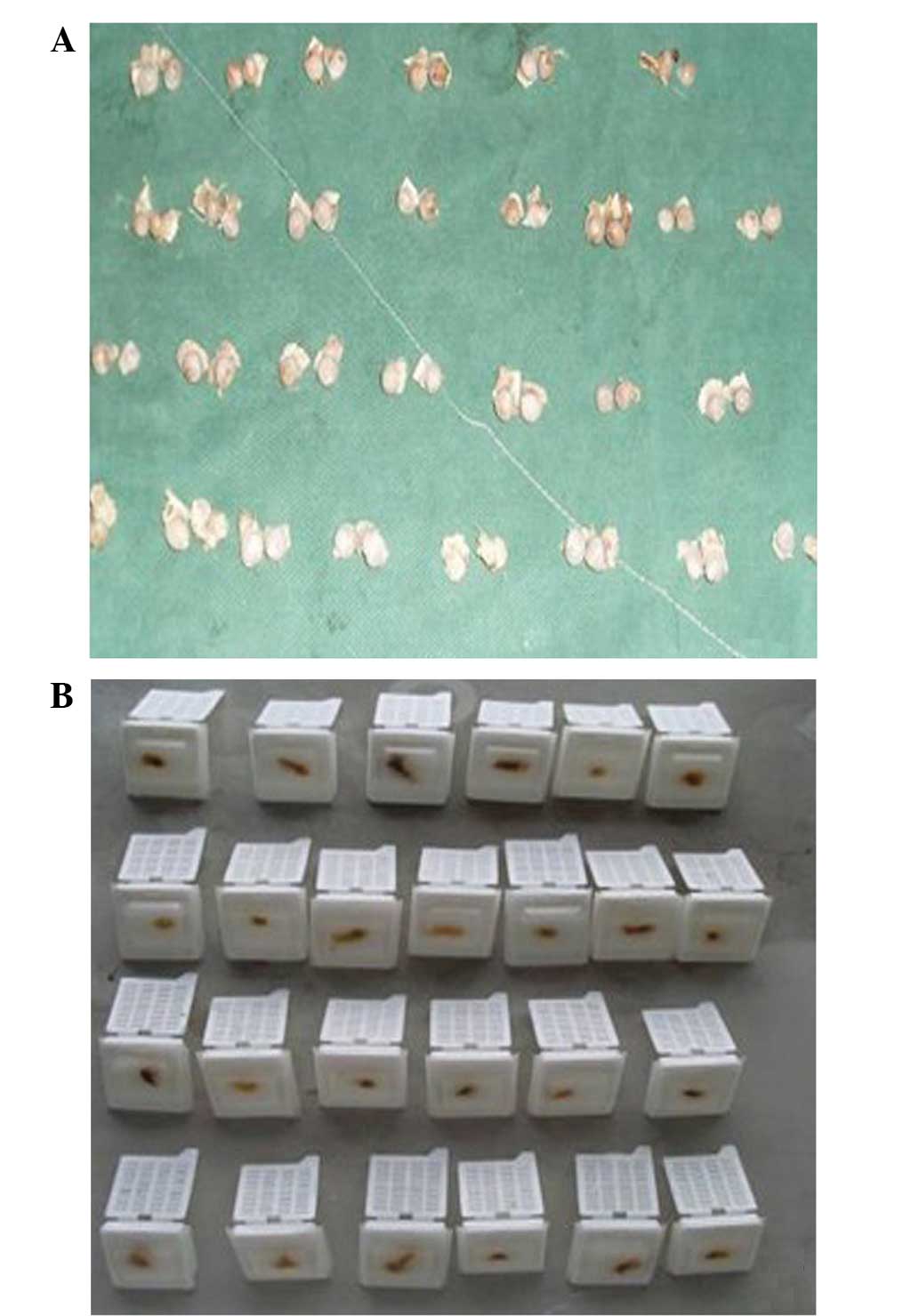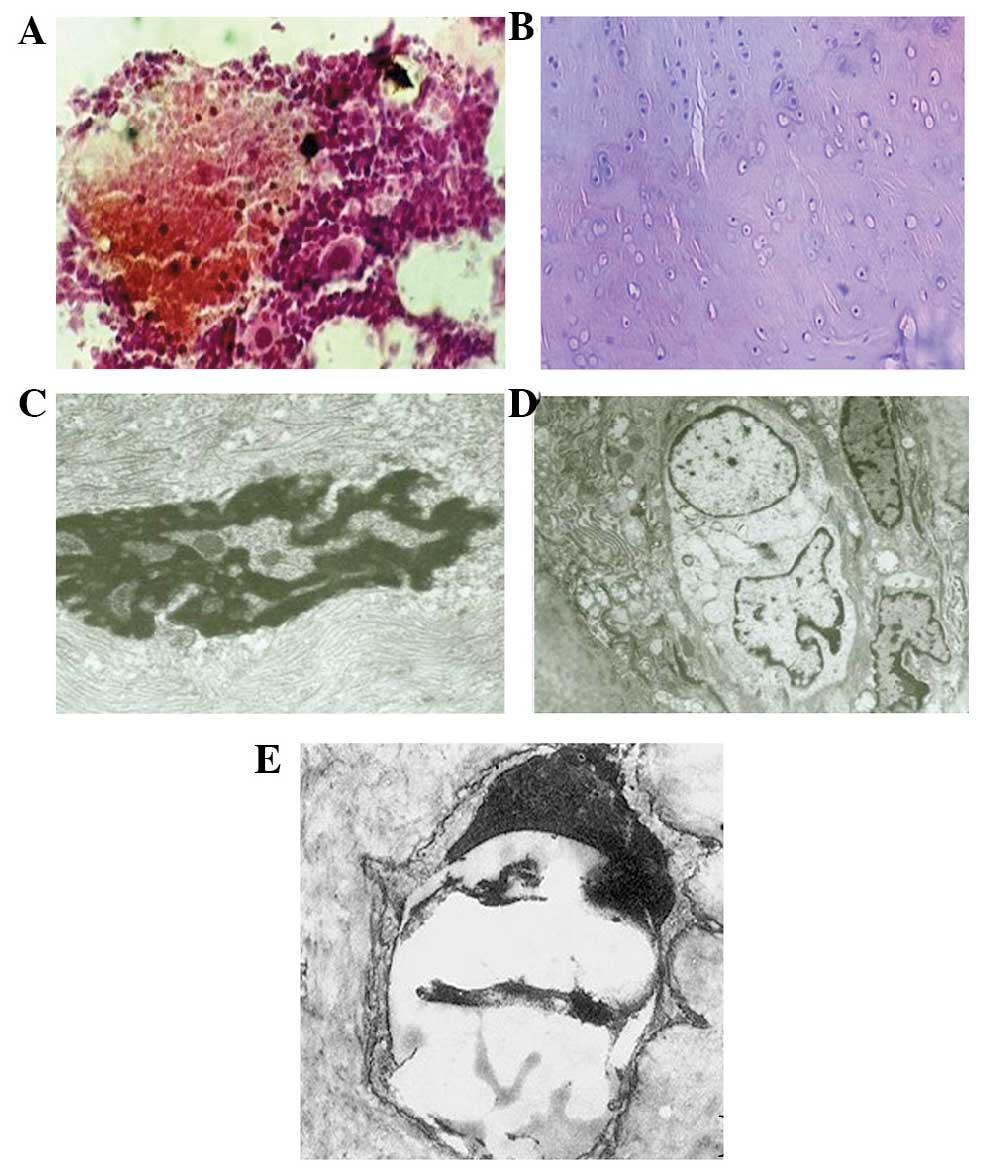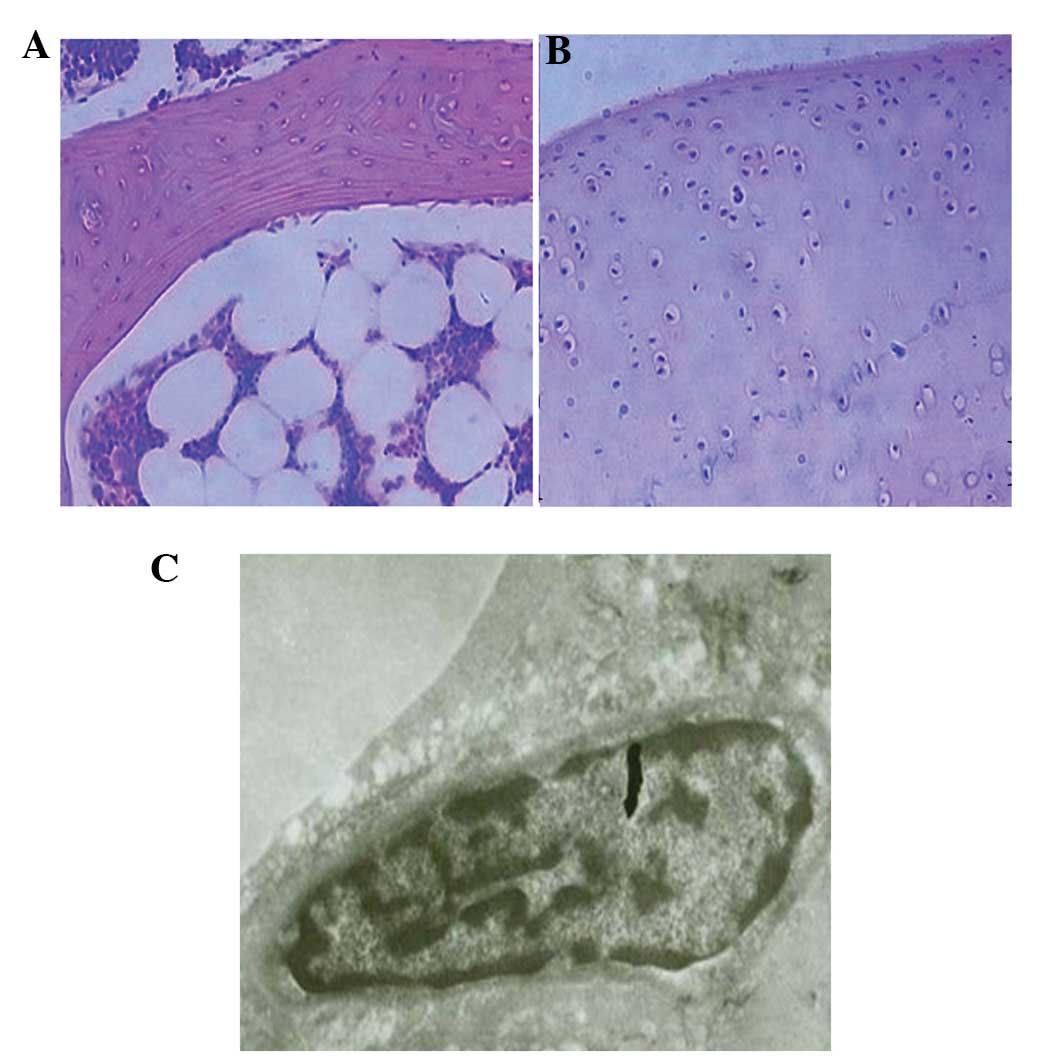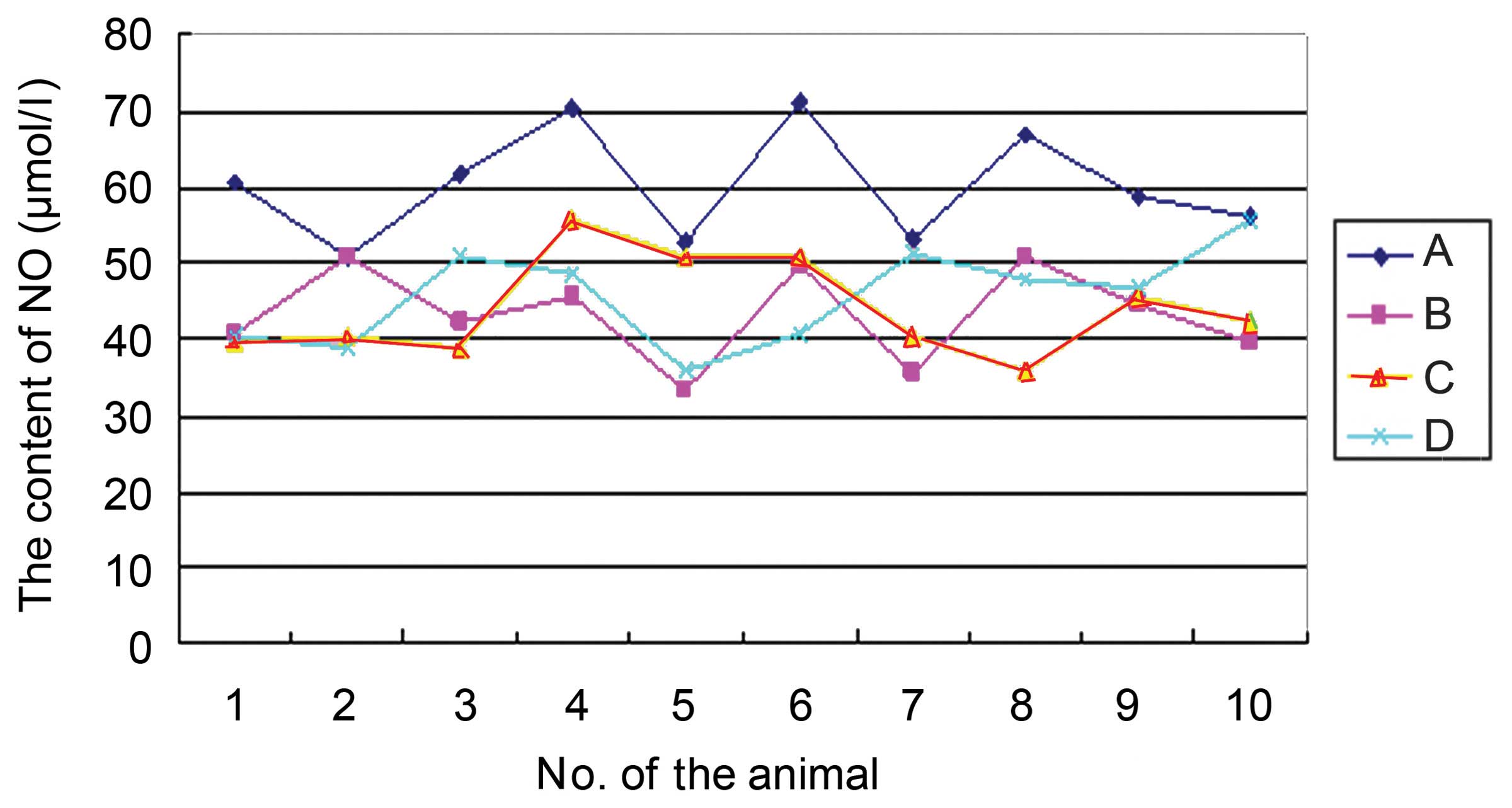|
1
|
Chen S, Li J, Peng H, Zhou J and Fang H:
Administration of erythropoietin exerts protective effects against
glucocorticoid-induced osteonecrosis of the femoral head in rats.
Int J Mol Med. 33:840–848. 2014.PubMed/NCBI
|
|
2
|
Saito M, Ueshima K, Fujioka M, et al:
Corticosteroid administration within 2 weeks after renal
transplantation affects the incidence of femoral head
osteonecrosis. Acta Orthop. 85:266–270. 2014. View Article : Google Scholar : PubMed/NCBI
|
|
3
|
Nishida K, Yamamoto T, Motomura G,
Jingushi S and Iwamoto Y: Pitavastatin may reduce risk of
steroid-induced osteonecrosis in rabbits: A preliminary
histological study. Clin Orthop Relat Res. 466:1054–1058. 2008.
View Article : Google Scholar : PubMed/NCBI
|
|
4
|
Takano-Murakami R, Tokunaga K, Kondo N,
Ito T, et al: Glucocoriticoid inhibits bone regeneration after
osteonecrosis of the femoral head in aged female rats. Tohoku J Exp
Med. 217:51–58. 2009. View Article : Google Scholar : PubMed/NCBI
|
|
5
|
Chan KL and Mok CC: Glucocorticoid-induced
avascular bone necrosis: Diagnosis and management. Open Orthop J.
6:449–457. 2012. View Article : Google Scholar : PubMed/NCBI
|
|
6
|
Chen C, Yang S, Feng Y, et al: Impairment
of two types of circulating endothelial progenitor cells in
patients with glucocorticoid-induced avascular osteonecrosis of the
femoral head. Joint Bone Spine. 80:70–76. 2013. View Article : Google Scholar : PubMed/NCBI
|
|
7
|
Tan G, Kang PD and Pei FX: Glucocorticoids
affect the metabolism of bone marrow stromal cells and lead to
osteonecrosis of the femoral head: A review. Chin Med J (Engl).
125:134–139. 2012. View Article : Google Scholar : PubMed/NCBI
|
|
8
|
Zou W, Yang S, Zhang T, et al: Hypoxia
enhances glucocorticoid-induced apoptosis and cell cycle arrest via
the PI3K/Akt signaling pathway in osteoblastic cells. J Bone Miner
Metab Sep. 18:2014.(Epub ahead of print).
|
|
9
|
Ye J, Wu G, Li X, et al: Millimeter wave
treatment inhibits apoptosis of chondrocytes via regulation dynamic
equilibrium of intracellular free Ca2+. Evid Based
Complement Alternat Med. 2015:4641612015. View Article : Google Scholar : PubMed/NCBI
|
|
10
|
Ohzono K, Takaoka K, Saito S, Saito M,
Matsui M and Ono K: Intraosseous arterial architecture in
nontraumatic avascular necrosis of the femoral head.
Microangiographic and histologic study. Clin Orthop Relat Res.
277:79–88. 1992.PubMed/NCBI
|
|
11
|
Eberhardt AW, Yeager-Jones A and Blair HC:
Regional trabecular bone matrix degeneration and osteocyte death in
femora of glucocorticoid-treated rabbits. Endocrinology.
142:1333–1340. 2001. View Article : Google Scholar : PubMed/NCBI
|
|
12
|
Pietrograndi V and Mastromarino R:
Osteopatia da prolungata trattamento cortisonico. Ortop Traum Appar
Mar. 25:791–810. 1957.(In Italian).
|
|
13
|
Fukushima W, Fujioka M, Kubo T, et al:
Nationwide epidemiologic survey of idiopathic osteonecrosis of the
femoral head. Clin Orthop Relat Res. 468:2715–2724. 2010.
View Article : Google Scholar : PubMed/NCBI
|
|
14
|
Qiu NH and Zhang W: Infectious atypical
pneumonia after the etiology and treatment of femoral head
necrosis. Chinese J Tissue Eng Res. 17:5525–5530. 2013.
|
|
15
|
Weinstein RS: Glucocorticoid-induced
osteonecrosis. Endocrine. 41:183–190. 2012. View Article : Google Scholar : PubMed/NCBI
|
|
16
|
Kerachian MA, Cournoyer D, Harvey EJ, et
al: New insights into the pathogenesis of glucocorticoid-induced
avascular necrosis: Microarray analysis of gene expression in a rat
model. Arthritis Res Ther. 12:R1242010. View Article : Google Scholar : PubMed/NCBI
|
|
17
|
Kameda H, Amano K, Nagasawa H, et al:
Notable difference between the development of vertebral fracture
and osteonecrosis of the femoral head in patients treated with
high-dose glucocorticoids for systemic rheumatic diseases. Intern
Med. 48:1931–1938. 2009. View Article : Google Scholar : PubMed/NCBI
|
|
18
|
Chen RM, Liu HC, Lin YL, Jean WC, Chen JS
and Wang JH: Nitric oxide induces osteoblast apoptosis through the
de novo synthesis of Bax protein. J Orthop Res. 20:295–302. 2002.
View Article : Google Scholar : PubMed/NCBI
|
|
19
|
Buerk DG, Barbee KA and Jaron D: Nitric
oxide signaling in the microcirculation. Crit Rev Biomed Eng.
39:397–433. 2011. View Article : Google Scholar : PubMed/NCBI
|
|
20
|
Bao F, Wu P, Xiao N, Qiu F and Zeng QP:
Nitric oxide-driven hypoxia initiates synovial angiogenesis,
hyperplasia and inflammatory lesions in mice. PLoS One.
7:e344942012. View Article : Google Scholar : PubMed/NCBI
|
|
21
|
Calder JD, Buttery L, Revell PA, et al:
Apoptosis - a significant cause of bone cell death in osteonecrosis
of femoral head. J Bone Joint Surg Br. 86:1209–1213. 2004.
View Article : Google Scholar : PubMed/NCBI
|
|
22
|
Hu M, Zhao H, Dong X, Luo D and Zhou X:
General and light microscope observation on histological changes of
femoral heads between SANFH rabbit animal models and it were
intervened by Osteoking Zhongguo Zhong Yao Za Zhi. 35:2912–2916.
2010.(In Chinese). PubMed/NCBI
|
|
23
|
Lee JS, Lee JS, Roh HL, Kim CH, Jung JS
and Suh KT: Alterations in the differentiation ability of
mesenchymal stem cells in patients with nontraumatic osteonecrosis
of the femoral head: Comparative analysis according to the risk
factor. J Orthop Res. 24:604–609. 2006. View Article : Google Scholar : PubMed/NCBI
|


















